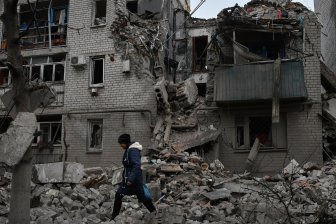Heading to the backcountry?
Avalanche Canada says it has a new forecast system that outdoor enthusiasts will find easier to use.
The new model will group areas that have similar avalanche conditions, along with providing relevant information to users.

“This new system allows our forecasts to more accurately reflect the conditions in the country,” Avalanche Canada says on its website.
“Our regions are now determined by the avalanche conditions. We made these changes to address one of our biggest problems with our old system, where conditions would often vary significantly across some of our larger regions.”
The non-profit says about 10 people die each year in BC from avalanches.
“It’s a serious risk for anyone traveling in the backcountry in winter,” said avalanche forecaster Simon Horton.

Avalanche Canada says this is what’s new:
- The homepage map will have a new search function.
- Each forecast region is colored to reflect its highest hazard rating.
- The forecast will contain boundaries that change in response to conditions.
- There will no longer be fixed forecast regions or region names.
- Forecasters will determine regional boundaries each day.
“Sometimes you can see regions of the same color separated in different forecasts,” says Avalanche Canada.
“This means the highest hazard rating is the same across these two regions, but the avalanche problems are different.”

The keystone in Avalanche Canada’s new flexible forecast models are areas called subregions.
Those 92 subregions won’t be found on the map, but Avalanche Canada says forecasters will group subregions with similar conditions to create a forecast region.
In making the switch, Avalanche Canada says it did so because they would often see significant variations in its previous 16 fixed regions.
“Applying one forecast to a region that had huge differences within its borders was a communication challenge,” says Avalanche Canada. “This new system allows us to provide more accurate forecasts when weather cycles affect some areas but not others.

“Now our forecasters can communicate that variability more effectively. The new search bar feature also makes it easier for users to determine which forecast regions apply to them.”
Horton says that while avalanche forecasts are important, outdoor enthusiasts should enroll in an avalanche safety course before heading into the backcountry.
“The avalanche safety training level 1 gives you basic tips on how to identify avalanche terrain,” Horton said, “how to use the forecast to make a travel plan as well as how to perform a rescue in case someone is caught in an avalanche become.”

© 2022 Global News, a division of Corus Entertainment Inc.





